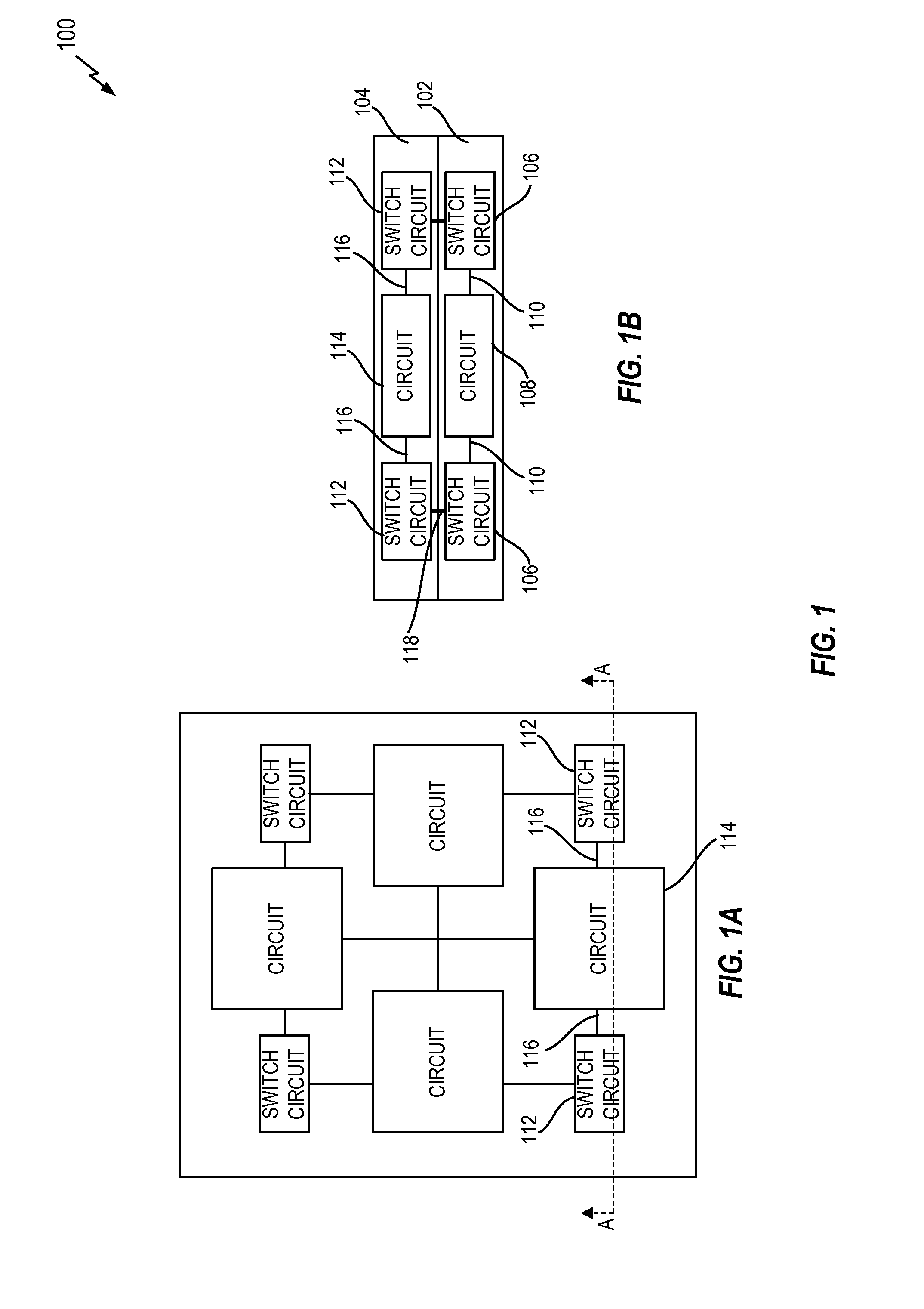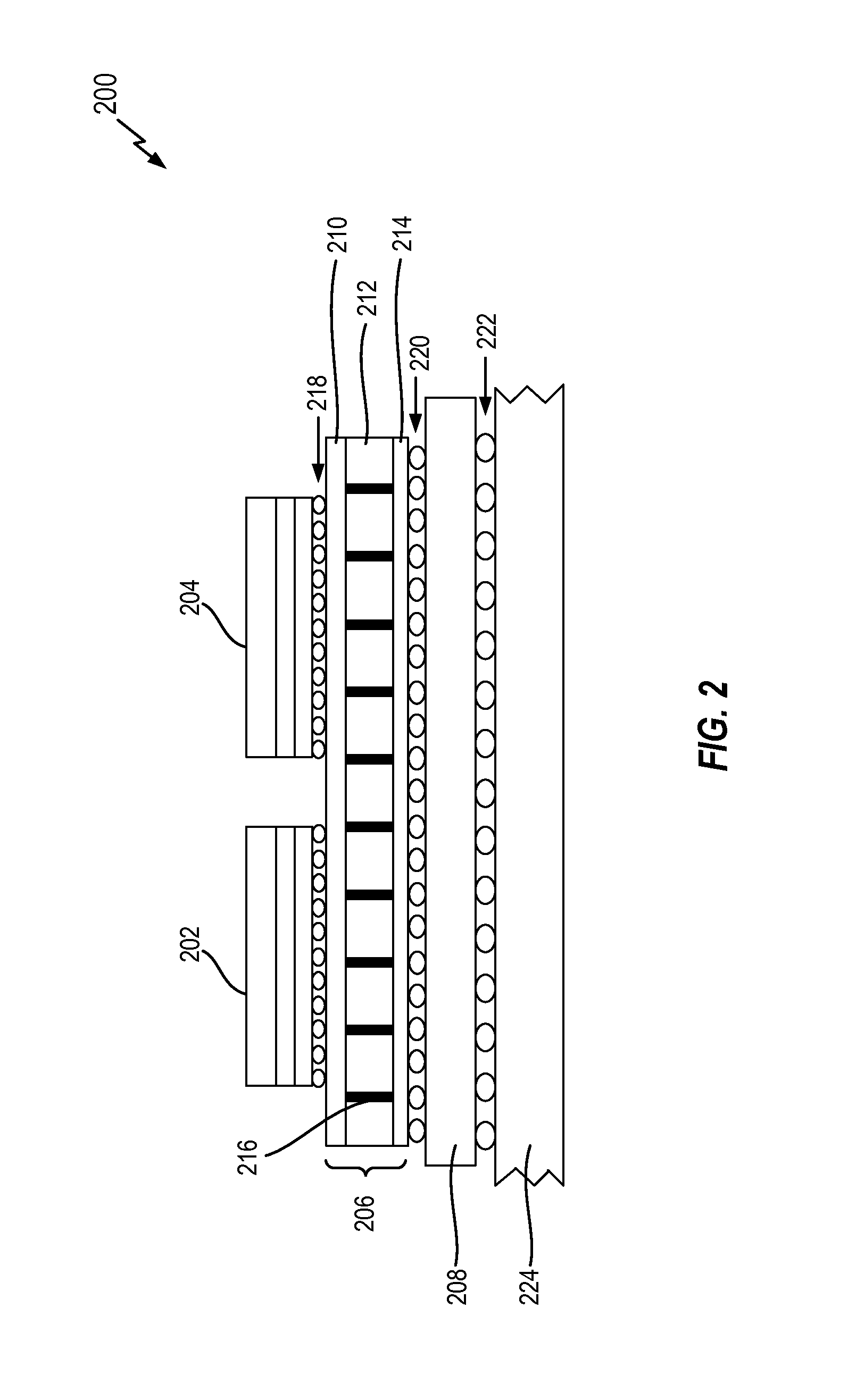3D integrated circuit
a technology of integrated circuits and integrated circuits, applied in the field of three-dimensional (3d) integrated circuits, can solve the problems of dramatic degradation of overall system performance, congestion of routing, and difficulty in dissipating heat, so as to improve overall system performance, reduce total power consumption, and low cost
- Summary
- Abstract
- Description
- Claims
- Application Information
AI Technical Summary
Benefits of technology
Problems solved by technology
Method used
Image
Examples
example electronic
Device
[0108]FIG. 21 is an illustration of an apparatus 2100 that may be implemented as a 3D-IC according to one or more aspects of the disclosure. The apparatus 2100 includes a communication interface (e.g., at least one transceiver) 2102, a storage medium 2104, a user interface 2106, a memory device 2108, and a processing circuit 2110.
[0109]These components can be coupled to and / or placed in electrical communication with one another via a signaling bus or other suitable component, represented generally by the connection lines in FIG. 21. The signaling bus may include any number of interconnecting buses and bridges depending on the specific application of the processing circuit 2110 and the overall design constraints. The signaling bus links together various circuits such that each of the communication interface 2102, the storage medium 2104, the user interface 2106, and the memory device 2108 are coupled to and / or in electrical communication with the processing circuit 2110. The si...
example processes
[0124]FIG. 22 illustrates a switching process 2200 in accordance with some aspects of the disclosure. The process 2200 may take place within a 3D-IC (e.g., one or more of the 3D-IC of any of FIG. 1, 5, 6, or 9-21), at least partially within a processing circuit (e.g., the processing circuit 2110 of FIG. 21), which may be located in an electronic device, a transceiver, or some other suitable apparatus. Of course, in various aspects within the scope of the disclosure, the process 2200 may be implemented by any suitable apparatus capable of supporting switching operations.
[0125]At block 2202, a signal is received via a first signal path at a first switch circuit. The first switch circuit is on a first die that lies within a first geometric plane.
[0126]The signal may take different forms in different implementations. In some aspects, the signal may be a test signal (e.g., that is selectively routed between first and second dies). In some aspects, the signal may be a power supply voltage...
PUM
 Login to View More
Login to View More Abstract
Description
Claims
Application Information
 Login to View More
Login to View More - R&D
- Intellectual Property
- Life Sciences
- Materials
- Tech Scout
- Unparalleled Data Quality
- Higher Quality Content
- 60% Fewer Hallucinations
Browse by: Latest US Patents, China's latest patents, Technical Efficacy Thesaurus, Application Domain, Technology Topic, Popular Technical Reports.
© 2025 PatSnap. All rights reserved.Legal|Privacy policy|Modern Slavery Act Transparency Statement|Sitemap|About US| Contact US: help@patsnap.com



